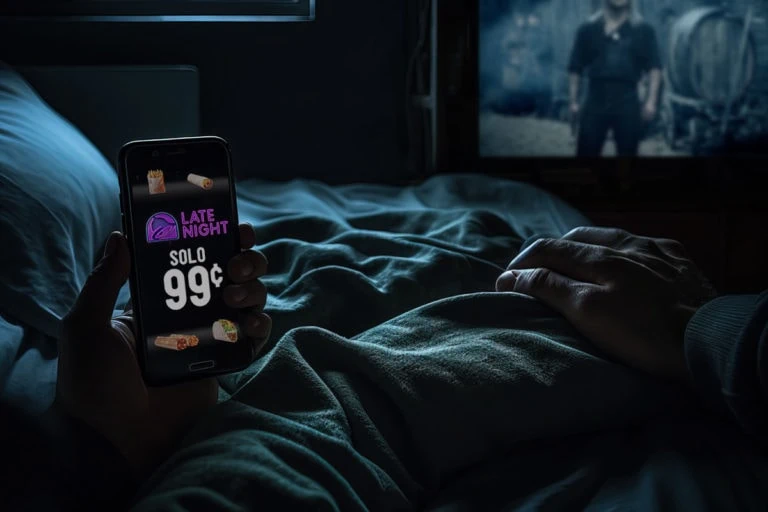Doing work for friends and family: The One-Time Coupon Method
Let’s talk about the dreaded topic of working for friends and family.
As a marketing and branding professional, I get asked all the time by friends, family, and sometimes even friends of friends and family to work on their projects.
It can be tricky to navigate, so I wanted to share my personal experience and tips on handling it like a pro.
Key Takeaways (TLDR)
- Set a high hourly rate to ensure you’re only taking on projects that you’re passionate about
- Offer a discounted rate for friends and family that is not too cheap but not so expensive that they can’t afford it.
- Set boundaries and manage expectations by being clear about how much time you can commit to their project.
- Implement a “one-time coupon” system where friends and family get one free pass to use you for their project, without charge, but with the understanding that only one final product will be delivered
- Doing free work can benefit both parties, as it can help strengthen relationships, build your portfolio, and lead to referrals and new business opportunities. Still, drawing a line and saying no is important if the project is too big or complex to handle.
Tips When doing work for friends and family:
Pricing
First things first, pricing. Putting a price tag on your skills can be tough, especially regarding family and friends.
I used to have a hard time with this, too, but over time, I’ve learned that setting a high hourly rate is essential.
Why? Well, for starters, it’s a way to ensure that you’re only taking on projects that you’re truly passionate about.
If someone comes to me with a project in an industry I’m unfamiliar with or interested in, I know it will take a lot of time and effort to research and create something of value.
And with a full-time job and limited free time, I want to ensure that my work is worth my while.
That’s why I charge around $300-$350 an hour for new clients. It’s a price that reflects the value I bring to the table and helps me prioritize projects that truly matter to me.
But what about friends and family?
It can be awkward to charge the same rate, especially when you know their budget might not be as flexible.
Sure, they might have come to you because of your talent, but sometimes, it’s also because they are looking for an affordable deal.
That’s where things can get tricky. Some people might suggest charging half the rate, but that might not feel right.
I’ve found that setting a rate of $200 an hour for friends and family can strike a balance.
It’s not too cheap that you feel like you’re giving away your skills for free, but it’s also not so expensive that your loved ones feel like they can’t afford your services.
Of course, this personal decision depends on your circumstances, but it’s a good starting point to remember.
This, however, is the price I’ve set for myself. Your price range may differ, and it could be more or less, but it depends mostly on your skills and industry standards.
The way I like to think about it is this. I set the highest hourly price based on how much I’d like to be paid for something I wouldn’t like to do unless the price was overwhelmingly good.
Then, for friends and family, I cut that rate in half or by two-thirds so they know my standard rate and the rate I’d normally give them at a substantial discount.
Dealing with Work For friends and family
Another important thing to consider is how much time you’re willing to commit to these projects. If you’re working for a new client, you know that you need to be compensated for every hour you spend on their project.
But with friends and family, working for free or putting in extra hours without charging them can be tempting.
This is a slippery slope that can lead to resentment and burnout. This is why I’ve developed a one-time coupon method for my friends and family.
Essentially, they get one “free pass” to use me for their project.
I’m willing to spend as much time on it as I need to without charging them, but I’m also clear that I’ll only deliver one final product.
This helps me avoid getting stuck in a never-ending cycle of revisions and tweaks while allowing them to get valuable work for free.
I know some of you might be thinking, “Why would you only deliver one thing? What if they don’t like it?” It’s also important to set boundaries and communicate them clearly with your loved ones.
Let them know that while you’re happy to help, you also have a full-time job and other responsibilities.
Be clear about your availability and how much time you can commit to their project. This will help manage their expectations and prevent any misunderstandings down the line.
However, it could take me longer to complete the project if I’m struggling with mental blocks or other design issues.
And that’s not something they’re paying for. So, by doing it for free, I’m not obligated to deliver something quickly, and they’re not expecting it.
This allows me to put my best foot forward and deliver the best design I can develop. It also allows them to judge it and decide if it’s what they want.
They can take and use, build on, or have someone else work on it. But they’re not paying for it, so they can’t expect me to keep making revisions until it’s perfect.
The true value of free work
Now, I know some of you might be thinking, “But Nam, isn’t it unfair to do work for free? Shouldn’t you be paid for your time and expertise?”
And you’re not wrong. But the truth is, there are times when doing free work can benefit both parties.
First, doing work for free for loved ones is a way to give back and show that you care. It’s a way to strengthen your relationships and help them when needed.
And, let’s face it, sometimes it’s just fun to do a project for someone you care about without worrying about the money.
But beyond that, doing work for free can also be a way to showcase your skills and build your portfolio.
It can be tough to get your foot in the door when you’re just starting out in a creative field.
Plus, it’s not like I never charge for my work. In fact, giving my friends and family the best possible version of what I can achieve often leads to referrals and new business opportunities.
And when those opportunities come around, I’m more than happy to charge for my time and expertise.
Of course, sometimes you need to draw a line and say no. If a loved one constantly asks you to do work for free or if the project is too big or complex for you to handle, it’s okay to say no.
But for those smaller projects you can handle and enjoy, the one-time coupon rule is a great way to create boundaries that work for both parties.
Additionally, setting up both a standard hourly rate and a friend and family rate is also helpful if they need your help to continue after your one-time delivery. Most of the time, I stick to my one-time delivery pretty strictly.
Sometimes, people will ask for more and are willing to pay for more. In those cases, now that you’ve established my regular hourly rate and my discount rate, you should have no problems charging at your discount rate or even higher if you think the product deems it.
Additionally, now that you’ve been clear about your working style and deliverables, you can certainly stick to that even for your next iteration and limit it once again to just one deliverable if that is what you want.
So there you have it, my friend. The “one-time coupon” approach to doing design work for friends and family.
It’s a way to maintain those relationships while still giving them the best possible version of what you can achieve.
And who knows? It might just lead to some new business opportunities down the line.
Conclusion
In this article, we discussed the topic of working for friends and family, which can be a tricky situation to navigate.
We talked about the importance of setting a high hourly rate for new clients, which ensures that you’re taking on projects that you’re passionate about.
As for friends and family, setting a rate of $100 or $200 an hour can strike a balance between feeling like you’re giving away your skills for free and your loved ones feeling like they can’t afford your services.
You figure out what seems fair and comfortable to you.
Having boundaries and communicating them clearly with your loved ones is essential. Be clear about your availability and how much time you can realistically commit to their project.
You can also develop a one-time coupon method for your friends and family.
This system helps you avoid getting stuck in a never-ending cycle of revisions and tweaks while giving them a chance to get a valuable piece of work for free.
Doing work for free can also be a way to showcase your skills and build your portfolio. But sometimes you need to draw a line and say no.
If a loved one is constantly asking you to do work for free or if the project is too big or complex for you to handle, it’s okay to say no.
The one-time coupon rule is a great way to create boundaries that work for both parties.
Here are five key points to recap the article:
- Setting a high hourly rate for new clients ensures that you’re taking on projects that you’re passionate about.
- Setting an hourly rate for friends and family can strike a balance between feeling like you’re giving away your skills for free and your loved ones feeling like they can’t afford your services.
- It’s essential to have boundaries and communicate them clearly with your loved ones, letting them know about your availability and how much time you can realistically commit to their project.
- Developing a one-time coupon system for your friends and family is a great way to avoid getting stuck in a never-ending cycle of revisions and tweaks while giving them a chance to get a valuable piece of work for free.
- Doing work for free can be a way to showcase your skills and build your portfolio, but it’s also okay to say no when a project is too big or complex for you to handle.







